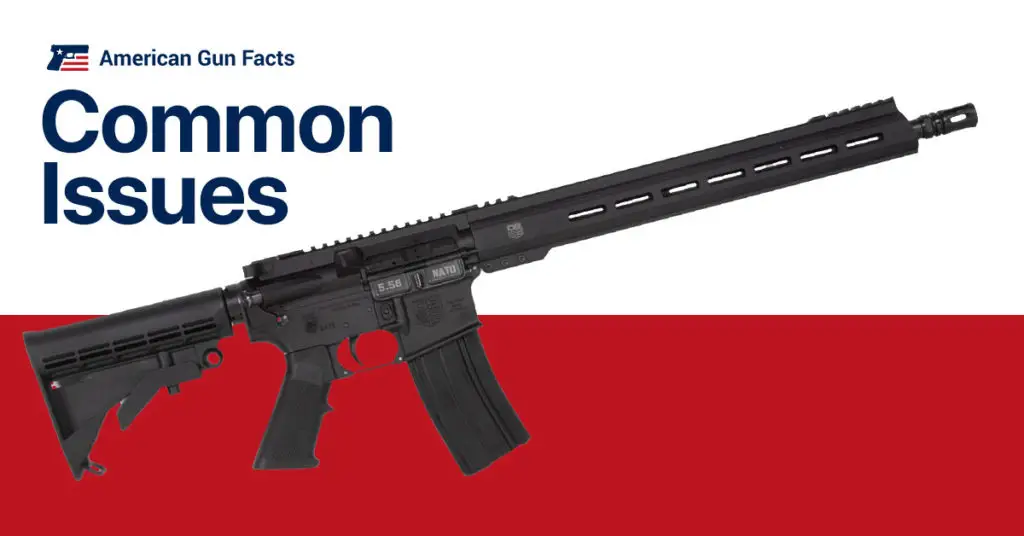In this piece, we’re going to talk about Diamondback Firearms’ AR15 rifles. Specifically, we cover four problems that users have documented in these rifles and some fixes for those problems. But first, a little context on the company.
Diamondback Firearms is an American-based gun company that has been in operation since 1989. They make a fairly wide range of firearms, from a .22LR revolver all the way up to AR10s in .308. Within all of that variety, one of the things that have made the company popular among shooters is that their base-level ARs offer a competitive match of price and quality.
With that in mind, every AR has its issues, and any time you’re thinking about making a purchase, it’s a good idea to seek out some more critical reviews or sources of information so that you can make a more informed purchase decision. Thus, we’re going to talk about four of them here. None of the problems we discuss are either systematic design failures, nor are any of them immediately dangerous to the shooter, so, after writing this, we still have a pretty positive outlook on the ARs produced by Diamondback Firearms and think they’re a good AR with which to start shooting.
1: Over-Gassing
Over-gassing is first noticeable to most users when you look at the ejection pattern. If spent casings are being thrown a lot further than necessary, or when compared to other ARs, then that’s a sign of too much gas getting into the system. Another sign can be increased recoil, though .223 does not have much recoil to it to begin with. Finally, you might notice excess wear on the rails of the bolt if you shoot hundreds of rounds in a single session.
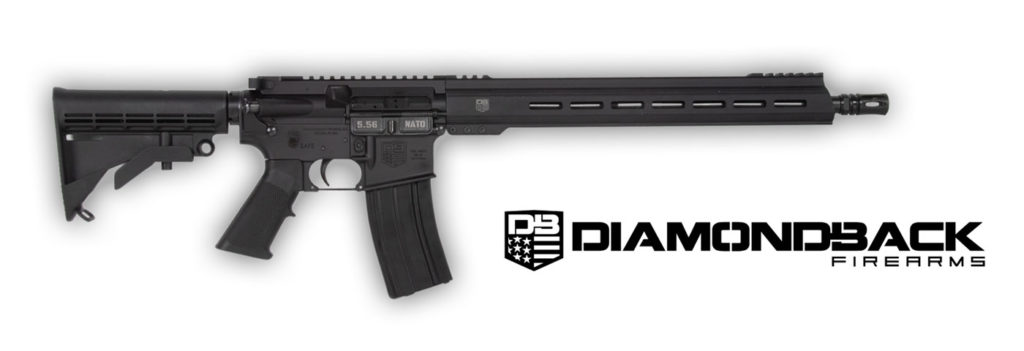
Usually, over-gassing is caused by the gas port being a little bit too large on the barrel. Sadly, there also is not a ton to be done about it on ARs without swapping the barrel. This has nothing to do with Diamondback firearms as such: Eugene Stoner designed the AR with a non-adjustable gas system all the way back in the 1950s.
Similarly, being over-gassed is extremely common in firearms that were first designed as military small arms. One way to ensure that a firearm is reliable, even in muddy, sandy, or otherwise poor conditions, and that it can run with inconsistent ammunition, is to make sure that there is enough gas getting back into the system to cycle the bolt no matter what.
How to Fix It
With that in mind, there are some things you can do to make over-gassing less of a problem. First, always make sure to wear eye protection in case any hot gasses make their way back into your face. This is doubly true if you run the gun with a suppressor. If your AR is already over-gassed, however, we don’t think it’s the best idea in the world to run it suppressed, as you’ll likely get even more hot gasses blowing back in your face to the point where goggles might be necessary.
As a last resort, if your rifle is over-gassed to the point where it is causing excessive wear or becomes extremely uncomfortable to shoot, then getting in touch with Diamondback would be a good idea, as they could replace the barrel for one that has a smaller has port, which would remediate the issue.
Overall, this is a common issue to most ARs, not just those sold by Diamondback, so we do not think this should be a make or break in terms of deciding to purchase a particular rifle: most ARs are at least a little over-gassed for reliability.
2: Failures to Extract
A failure to extract is when you fire around, but, as the bolt comes back, the spent brass stays in the chamber or somewhere in the upper receiver. These can be caused by several reasons.
Most commonly, especially in new guns, the chamber’s tolerances are a little tight and need to wear in slightly to allow the spent casing to come out more freely. There are also cases of cases rupturing and becoming stuck in the chamber so that they can’t be extracted at all. Least commonly, the extractor can rip the base of the cartridge right off, leaving, in effect, a sleeve of brass in the chamber.
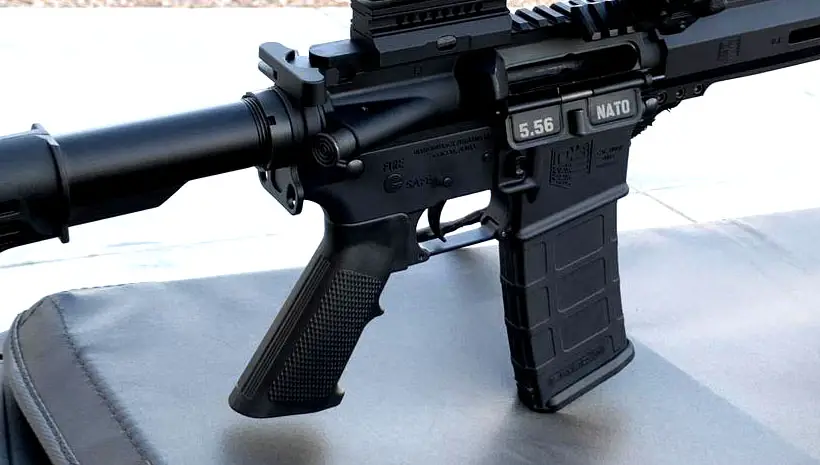
How to Fix It
With that first time of failure to extract, the best thing to do is simply to oil the chamber a little bit and shoot a few hundred rounds. It will likely wear in, and this will stop being an issue. If that same type of issue persists, where normal-looking cases end up stuck in the chamber, the extractor might be out of specification and would need to be replaced.
The second and third types might have nothing to do with the firearm at all, and come mostly from poor-quality ammunition. If you’re having these issues with that too-good-to-be-true deal on ammo you got from a guy at the gun show who sells “hand loaded” ammunition in plastic bags, then we recommend using new, factory-made ammunition for better results.
For the first type of failure to extract, using the blade of a pocket knife to hook onto the rim of the casing and then flick it out of the chamber is usually enough to get it moving, and then you can dump it out of the ejection port. Do this with the magazine out, please.
For the more stuck casings, it’s probably smartest to unload the rifle and take it to a local gunsmith, who will know how to tell the difference between a stuck casing and a much more dangerous stuck live round and will be able to remove it appropriately using tools meant for the job.
Again, failures to extract are a common enough problem that a few here and there do not ruin a rifle. If, on the other hand, they’re a massive problem that recurs even after you’ve replaced the extractor and tried better ammo, then giving Diamondback a call might be a good idea.
3: Inconsistent Accuracy
We have seen some owners of Diamondback AR15s complain that when they first start shooting, they can get groups of about 4” at 100 yards, or 4MOA, that, as they shoot more during the same session, cut in about half to 2 MOA.
This kind of shift in group size is commonly caused by two things. First is the rifling in the barrel itself. No rifling is perfectly consistent throughout the entire length of a barrel. Because of this, it’s possible for points of impact and group size to shift between rounds as each bullet spins very slightly differently. As you fire more rounds, though, you will get some fouling in the barrel which evens out those differences, making the barrel more consistent as long as it does not heat up greatly. This is the exact reason that, at high-stake shooting competitions, people often shoot up to 50 rounds before even beginning to shoot for points, as they’re trying to get fouling in the barrel to make it more consistent.
The other cause for this kind of inconsistency is heat treatment issues. All barrels are heat-treated in some fashion before being finished and attached to the firearm. The issue is that these processes are not always perfect, and you can get differences in hardness and density within parts of the same barrel. Thus, when the barrel heats up with shooting, it might bend a little bit this way or that, changing the point of impact as the barrel literally moves.
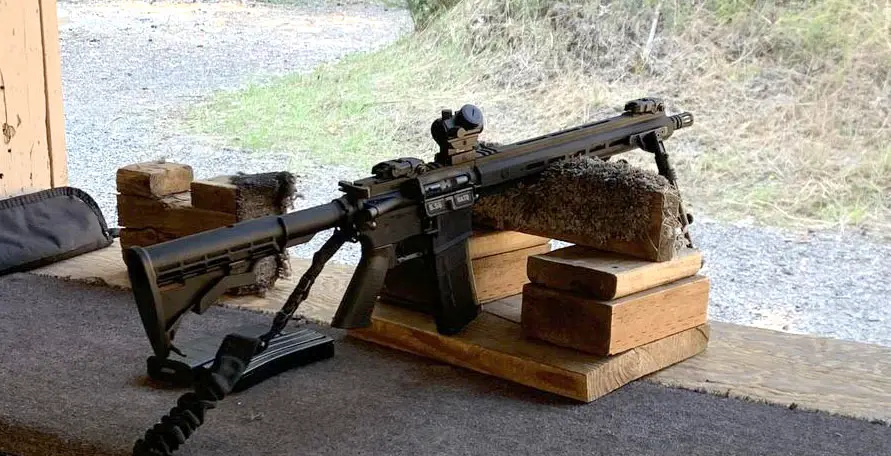
How to Fix It
If you’re experiencing inconsistent accuracy, the first thing we’d do is shoot about 200 rounds, all of which are the exact same ammunition, through the gun without cleaning it. If this remedies the issue, then simply use that ammo and do not clean the gun as much. If, however, this does not clear up the issue, then you might want to call Diamondback to see if they’re willing to swap out the barrel.
And, as a side note, before you do call Diamondback about a potential barrel issue, make sure that any of your optics are installed properly and do not move: a wobbly sight through poor installation will cause this same issue on the target even if the rifle itself is shooting just fine. When in doubt, rule out user error before attempting more technical solutions when it comes to firearms.
4: Failures To Feed
A failure to feed is when there is a loaded magazine in the gun but, for some reason, those rounds from the magazine do not make their way in the chamber. A failure to feed can come from several sources.
First, there might be some issue with the magazine itself that’s causing you an issue. While still on the magazine, there might be a problem with how it is seated. From there, there’s also the possibility of ammunition issues. Lastly, a manufacturing defect might be the cause of some failures to feed.

How to Fix It
Magazine issues are the easiest to diagnose and remedy, so we’ll start there. First, make sure that the magazine is seated properly. Take it out, push it hard into the magazine well on an open bolt, and give it a little love tap on the bottom. Try to pull it out. If it won’t come out, it’s probably seated properly. If that does not fix it, try a different magazine entirely, as your issue might be either worn feed lips or a magazine spring. Magazines are cheap enough that getting a new one to ensure reliable feeding is well worth your time.
If a new magazine doesn’t fix it, try some standard military-style ball ammunition: others might be out of specification and may not feed properly because of it.
Assuming it’s neither the ammunition nor the magazine at fault here, the only major remaining issue are the feed ramps. If those had a manufacturing issue and are not geometrically where they’re supposed to be when compared to the feed lips, no amount of messing with the magazine will help, and the gun will need to go back to the factory.
Luckily, the vast majority of failures to feed are from the magazine not being inserted all the way, and they come from two things. First is that new shooters are too gentle with their magazines. The AR platform was designed initially for combat, so go ahead and seat that magazine like you have a little adrenaline flowing through your nervous system. From there, we’ve seen a few new shooters try to rock in an AR magazine like an AK: this, we think, is thanks to some poor and lazy animation from video game developers. AR magazines go in straight. Chances are, your feed ramps are just fine, so this is, once again, not a major issue with Diamondback.
Conclusion
So, are people having issues with Diamondback AR15s? It looks like, to us, that at least some issues are common enough to come up in user forums from time to time.
The good news is, none of these issues are, to us, major ones with the firearms themselves. A lot of them, especially failures to feed and extract, are just as often user or ammunition errors rather than the firearm itself. The other issues, over-gassing, and somewhat inconsistent accuracy are not uncommon to the AR platform generally, and all of them are fixable. Especially from budget-minded rifles, these kinds of problems on one gun out of likely thousands that run just fine are not major red flags from our point of few.

With all of that in mind, we had a hard time finding any issues reported about Diamondback in the last year or so. Given that these have also been the highest-volume new firearm sales years in history, we don’t think this is from a lack of new sales.
Instead, it seems like Diamondback’s newest iterations on their ARs have taken a lot of these complaints seriously, and that they make a good-quality AR.
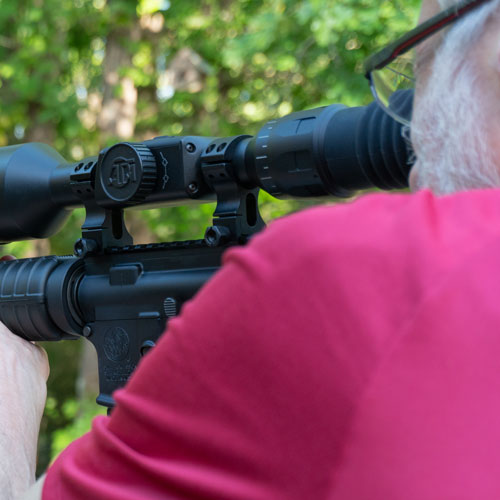
George has been an avid shooter for twenty years. He began shooting when he was gifted a Browning SA-22 for target practice. Now, as an academic, he combines his love of firearms and knowledge of history to write for firearms blogs and is still a frequent sight at the local range.
